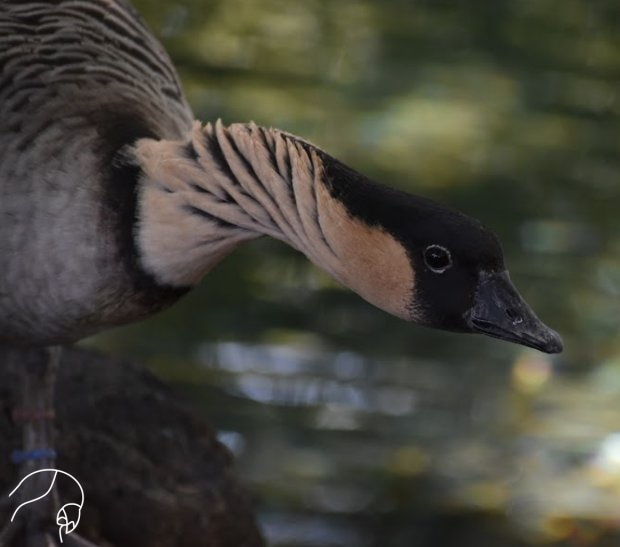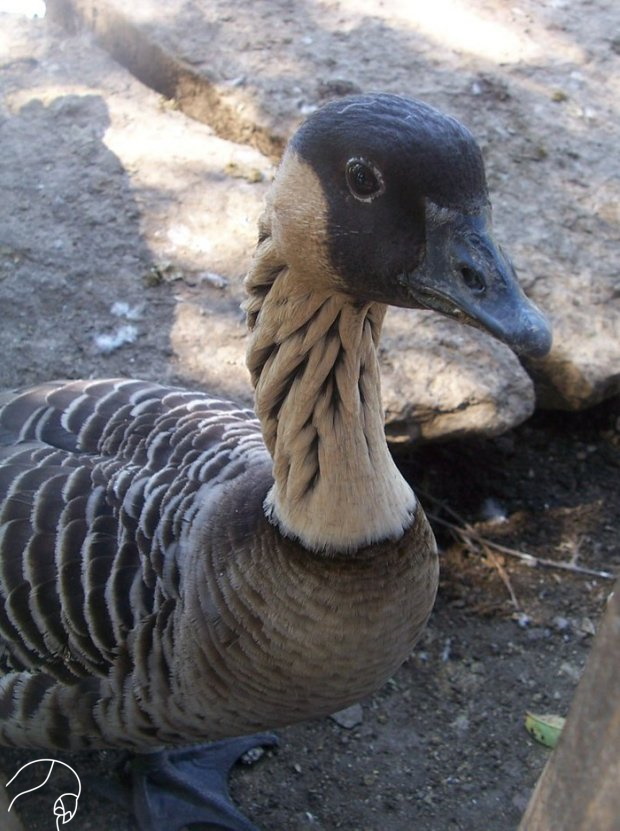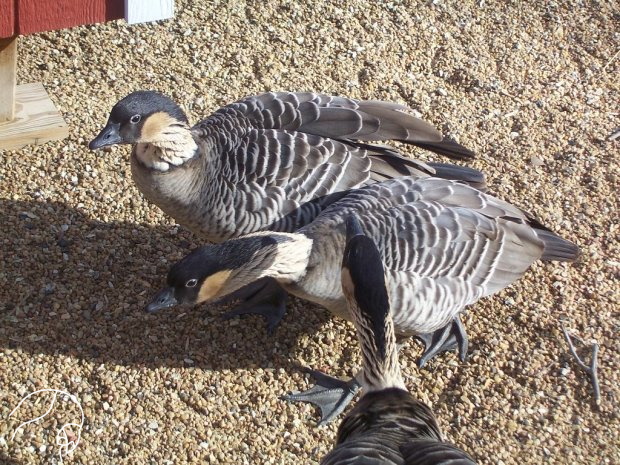Hawaiian Goose (Branta sandvicensis)
As its name suggests, this species is found only on the Hawaiian Islands in the wild and is the state bird of Hawaii. In 1950, only about 40 Nene remained. Thanks to an extensive conservation program & avicultural effort, the bird today now numbers more than 1,000 in the wild & 3,000 in captivity worldwide.






Scientific classification: Kingdom Animalia, Phylum Chordata, Class Aves, Order Anseriformes, Family: Anatidae, Genus: Branta, Species: Branta sandvicensis
Other Names: Nene, nēnē
Range: Hawaiian Islands of Oahu, Maui, Kauaʻi, Molokai, and Hawaiʻi.
Subspecies: None
Habitat: Grasslands, lava fields, coastal dunes, scrublands, parklands, and pastures.
Status in Wild: The Nene was on the verge of extinction in the 1950s, with only about 40 birds remaining. The biggest factor were introduced predators such as rats, cats, mongoose, and pigs. Birds were captured and the elimination effort against the invasive predators began. A very successful captive breeding program took place and with an reintroduction program, there are currently about 1,000 geese in the wild. The Nene is now listed as Near Threatened by IUCN.
Aviculture: The Nene is a very fun aviary bird, naturally tame and curious, by far one of my favorite species of waterfowl! The easy adaptability to captivity helped save this goose from extinction and their captive population is quite large in zoos and private aviaries in both North America and Europe. Despite being native to tropical islands, they are tough and hardy birds, able to withstand many climate extremes.
Nene are monogamous. The female will line her nest with down and lay a clutch of 2 to 5 eggs that are incubated by her for about 30 days. The male will remain near the nest, protecting his mate from potential predators. The goslings are precocial, covered in down and able to follow their parents shortly after hatching.
Like most geese, Nene are grazers, feeding on a variety of grasses, seeds, and leaves. In captivity, they are offered a formulated waterfowl pellet or crumble such as Mazuri and leafy greens should be offered daily.
Interesting Facts: Unlike other species of geese, Nene only have partial webbing on their feet. This adaptation is perfect for the lava slopes and island habitats as they can spend a great deal of time away from water.
The genus Branta is the Latin form of the Old Norse word Brandgás meaning burnt (translated as black goose); the species name sandvicensis refers to the Sandwich Islands, the name given to the Hawaiian Islands by James Cook in 1778. Nene refers to the soft "Ne-Ne" honks made by the geese.
- Hawaiian Goose - BirdLife International Factsheet
- Hawaiian Goose - eBird
- Hawaiian Goose/Nene - Harteman Wildfowl
- Hawaiian Goose/Nene - Honolulu Zoo
- Hawaiian Goose - iNaturalist
External Links
The beauty and genius of a work of art may be reconceived, though its first material expression be destroyed; a vanished harmony may yet again inspire the composer, but when the last individual of a race of living things breathes no more, another heaven and another earth must pass before such a one can be again. - William Beebe, 1906
Animal Wonders
We depend on our programs & donations to help fund the care and housing for our animals, most of which are either rescues or surrenders. We seem to be always taking in new animals that need a home or different situation, their care adds up. If you would like to help support Animal Wonders, it would be greatly appreciated. We are always in need of donations, caging material, lumber, crates, aquariums, straw, & newspapers.
Contact
Animal Wonders,LLC
Address : 405 W. 10th St, Holden, MO 64040
E-mail : info@animalwonders.net
Phone : 816-807-4748

